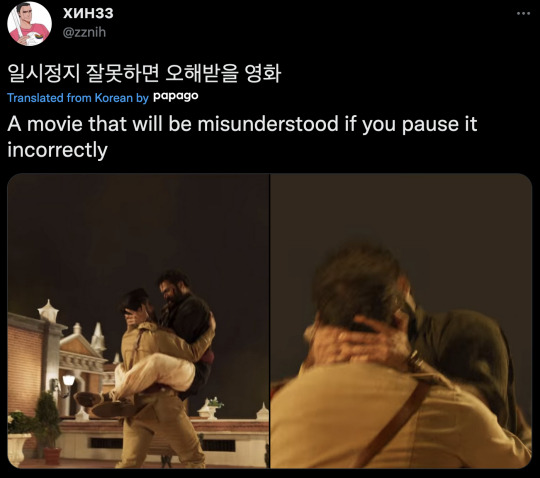#Good post
Text
the most Child Emperor urge i have is to shout "BOOORRIINGGG!!!" when i have to witness something i dont like for too long
71K notes
·
View notes
Text





Good Times~ ꜝꜝ
🔹 I made these illustrations in a new record time!! (2 hours)
#good omens 2#good ineffable omens#aziracrow#aziraphale#crowley#ineffable husbands#aziraphale and crowley#neil gaiman#good omens#good omens crowley#good post
6K notes
·
View notes
Text

179 notes
·
View notes
Text

#taylor swift#swifties#taylor swift poll#the eras tour#taylor is the best#good post#cute#speak now#midnights#taylor swift red carpet#tay tay#t swizzle#t swift#red carpet
46 notes
·
View notes
Text
Seed networks are community organizations that have multiplied in the past decade in different Brazilian biomes to collect, trade and plant native seeds in degraded areas.
In the Chapada dos Veadeiros area, in Goiás state members of seed networks from several parts of Brazil met for almost a week in early June.
Along with environmental organizations, researchers and government officials, they participated in discussions to boost Redário, a new group seeking to strengthen these networks and meet the demands of the country’s ecological restoration sector.
“This meeting gathered members of Indigenous peoples, family farmers, urban dwellers, technicians, partners, everyone together. It creates a beautiful mosaic and there’s a feeling that what we are doing will work and will grow,” says Milene Alves, a member of the steering committee of the Xingu Seed Network and Redário’s technical staff.
Just in 2022, 64 metric tons of native seeds were sold by these networks, and similar figures are expected for 2023.
The effort to collect native seeds by traditional populations in Brazil has contributed to effective and more inclusive restoration of degraded areas, and is also crucial for the country to fulfill its pledge under international agreements to recover 30 million acres of vegetation by 2030.
Seed collection for restoration in these areas has previously only been done by companies. But now, these networks, are organized as cooperatives, associations or even companies, enable people in the territories to benefit from the activity.
Eduardo Malta, a restoration expert from the Socio-Environmental Institute and one of Redário’s leaders, advocates for community participation in trading and planting seeds. “These are the people who went to all the trouble to secure the territories and who are there now, preserving them. They have the greatest genetic diversity of species and hold all the knowledge about the ecosystem,”
.
The Geraizeiros Collectors Network are one of the groups that makes up Redário. They were founded in 2021, and now gathers 30 collectors from eight communities in five municipalities: Montezuma, Vargem Grande, Rio Pardo de Minas, Taiobeiras and Berizal.
They collect and plant seeds to recover the vegetation of the Gerais Springs Sustainable Development Reserve, which was created in 2014 in order to stop the water scarcity as a result of eucalyptus monocultures planted by large corporations.
“The region used to be very rich in water and it is now supplied by water trucks or wells,” says Fabrícia Santarém Costa, a collector and vice president of the Geraizeiros Collectors’ Network. “Today we see that these activities only harm us, because the [eucalyptus] company left, and we are there suffering the consequences.”
Costa was 18 years old in 2018, when the small group of seed collectors was founded and financed by the Global Environmental Facility. She says that working with this cooperative changed the way she looks at life and the biome in which she was born and raised.
She describes restoring the sustainable development work as "ant work", ongoing, slow. But it has already improved the water situation in the communities. In addition, seed sales complement geraizeiros’ income, enabling them to remain in their territories.
.
The Redário initiative also intends to influence public policies and regulations in the restoration sector to disseminate muvuca, the name given by the networks to the technique of sowing seeds directly into the soil rather than growing seedlings in nurseries.
Technical studies and network experiences alike show that this technique covers the area faster and with more trees. As a result, it requires less maintenance and lower costs. This system also distributes income to the local population and encourages community organizations.
“The muvuca system has great potential [for restoration], depending on what you want to achieve and local characteristics. It has to be in our range of options for meeting the targets, for achieving them at scale,” says Ministry of the Environment analyst Isis Freitas.
Article published August 3rd, 2023
#long post#climate change#climate#hope#good news#more to come#climate emergency#positive news#hopeful#climate justice#news#important#good post#links
199 notes
·
View notes
Text
Hi, just wanna add/bring up three more points to the DFO theory + Midoriya having a natural Quirk
Also some thoughts of 412 are included here:
1. What if it's behind the vault door? Why do the vestiges sit in front of it, almost as if they're guarding it? Why is that door the only thing intact?
When Kudo says he has to let go of OFA, what if that's so they can't hold back what's in the vault door? Why was it specifically Star's arm, when we know she was raising hell in AFO's world?
One For All can't be wielded by a normal person anymore. In other words, someone with a Quirk. By locking the Quirk away, does that count? And they're just holding it back so Midoriya doesn't become like Shinomori's shortened life or AFO's Singularity-body-warping? Since Yoichi already said they're past the point of Singularity, why hasn't Midoriya's body warped?
2. The post I made about AFO liking Quirks like Toga likes blood. Midoriya, like AFO, has a fascination of Quirks. He analyzes how people use theirs and is amazed by how hard Quirks are put to use for people. But he also has a great/innate understanding of Quirks, and managed to use the vestiges' with barely any training (ex. Fa Jin, Gearshift)
Unlike AFO, Midoriya looks at the person first (Eri, Shoto, Bakugo, etc), and even Kudo calls this out in 412, that he looks at the goodness in people's hearts. AFO looks at the Quirk first (Ragdoll, Best Jeanist), and discards the person. He never bothered to find Ragdoll after stealing her Quirk, nor did he care when he used corpses as the base for Nomus.
3. The double-pinky joint. Midoriya has this, and so it's believed he won't have a Quirk. But if he's technically second-generation, he can still absolutely have a Quirk; for the first generation, Abilities happened because of a newly-discovered gene. People who could have the joint could still have Abilities, because they were just normal humans and suddenly woke up to find maybe their hair is floating now. Abilities were just popping up at random, and I don't think it'd be reasonable that a lot of humanity had just been living without the extra joint. Abilities scared them because no one knew what caused them, and created a fantasy-ish Uncanny Valley effect
The pinky toe was discovered later, and people used it as a basis then, but it's rudimentary. Because Midoriya was told to give up by Garaki, and Inko just apologized and cried, Midoriya just believed he really didn't have a Quirk.
Which brings the next point:
4. We see Midoriya as a kid, tearfully trying to make his parents' Quirks work. Lifting objects, or breathing fire—but if AFO was his dad, he never would've had the ability to breathe fire.
The start of All For One was a blank slate of having no Quirks available, because none had been taken yet.
But Midoriya, rather than take, was given One For All: a Quirk. Even disregarding the DFO theory, this is a parallel of AFO and OFA.
All For One takes. One For All decides to be given.
If Midoriya had AFO as a natural Quirk, it makes sense he's classified as Quirkless. But it also makes sense that he can handle multiple Quirks in one body from OFA; because the nature of AFO is being able to hold multiple Quirks
Midoriya is past the point of Singularity. But he's completely fine. Broken bones, compared to the body morphing into something else entirely? He got a good deal.
Midoriya is Yoichi's embodiment of ["the power to give and take could have been the kindest in the whole world"].
Midoriya is like. An intersection of AFO and OFA then. He has AFO, but was given OFA, and wants to save everyone. Living exactly what AFO could have done with his Quirk: saving others.
#yknow i didnt believe the dfo theory at all#then i saw someone make a post here and went OH ACTUALLY HOLD ON-#that post talking about how AFO purposely ignored the UA students and hid them behind a wall despite having#Search at the time that wouldve locked down on them#and the Hisashi name meaning and seeing him abroad and such#good post#anywhoo this is just sparked by ch 412#whyd kudo say to let go of OFA?#mha#bnha#my hero academia#boku no hero academia#afo#all for one#ofa#one for all#dfo#izuku midoriya#spoilers#the last point is my favorite of the 4 when talking about AFO#the one about the vault door is more of my own speculation of the chapter so i enjoy it too#yoichi shigaraki#AFO really is a blank slate. All For One only had a quirk available because he stole his mother's right after birth#midoriya didnt. and he doesnt have holes in his palms#so his quirk factor is elsewhere or him having AFO would manifest differently#in which case i consider Inkos quirk of pulling things toward her. they couldve combined#he tried pulling objects. he never tried pulling people or quirks.
42 notes
·
View notes
Text
“our get along shirt” except it’s “our divorce shirt”
826 notes
·
View notes
Text
McCoy gave Scotty top surgery for free on the Enterprise tell me im wrong i dare you
88 notes
·
View notes
Text
dude did you seriously just put the lime in the coconut and drink it all up?
19K notes
·
View notes
Text
if not for the obi wan of this land i would have slaughtered you
#found in my drafts from two years ago#good post#anakin coded#obi wan kenobi#obi-wan kenobi#anakin skywalker#obikin#vine reference#i think??? maybe it’s just a meme
23 notes
·
View notes
Text
Waiting For The TTPD:

#taylor swift#swifties#the eras tour#taylor is the best#good post#cute#taylor swift ttpd#ttpd#ts ttpd#ttpd era#ttpd predictions#ttpd tracklist#the tortured poets department
24 notes
·
View notes
Text
According to a new survey, lawmakers are playing an increasingly important role in holding corporations and governments accountable for failures to tackle the climate crisis.
The research was done by Columbia Law School, and was commissioned by the United Nations Environment Program (UNEP). It revealed that the number of climate-related court cases has more than doubled since 2017 and is steadily rising around the world.
Their report confirms a trend highlighted in the World Economic Forum’s Global Risks Report 2023, which claimed that individuals and environmental organizations were, more and more, turning to the law, as it became clear that the pace of transition to net-zero emissions was too slow.
“Climate litigation is increasing and concerns about emissions under-reporting and greenwashing have triggered calls for new regulatory oversight for the transition to net zero,” the Forum report said.
The UNEP report catalogues a number of high-profile court cases which have succeeded in enforcing climate action. In 2017, when climate case numbers were last counted, 884 legal actions had been brought. Today the total stands at 2,180.
The majority of climate cases to this date (1,522) have been brought in the US, followed by Australia, the UK, and the EU. The report notes that the number of legal actions in developing countries is growing, now at 17% of the total.
Climate litigation is also giving a voice to vulnerable groups who are being hard hit by climate change. The report says that, globally, 34 cases have been brought by children and young people, including two by girls aged seven and nine in Pakistan and India.
Here are five of the climate breakthroughs achieved by legal action so far.
1. Torres Strait Islanders Vs Australia
In September 2022, indigenous people living on islands in the Torres Strait between northern Queensland and Papua New Guinea won a landmark ruling that their human rights were being violated by the failure of the Australian government to take effective climate action.
The UN Human Rights Committee ruling established the principle that a country could be in breach of international human rights law over climate inaction. They ruled that Australia's poor climate record was a violation of the islanders’ right to family life and culture.
2. The Paris Agreement is a human rights treaty
In July 2022, Brazil's supreme court ruled that the Paris climate agreement is legally a human rights treaty which, it said, meant that it automatically overruled any domestic laws which conflicted with the country’s climate obligations.
The ruling ordered the government to reopen its national climate mitigation fund, which had been established under the Paris Agreement.
3. Climate inaction is a breach of human rights
Upholding an earlier court ruling that greenhouse emissions must be cut by 25% by 2020, the Netherlands Supreme Court ruled that failure to curb emissions was a breach of the European Convention on Human Rights.
The December 2019 ruling stated that, although it was up to politicians to decide how to make the emission cuts, failure to do so would be a breach of Articles 2 and 8 of the Convention which affirm the right to life and respect for private and family life.
4. Companies are bound by the Paris accord
Corporations, and not just governments, must abide by the emissions reductions agreed in the Paris climate treaty. This principle was established by a 2021 ruling in the Netherlands brought by environmentalists against energy group Royal Dutch Shell.
The court ordered Shell to cut its CO2 emissions by 45% by 2030 bringing them in line with Paris climate targets. The judge was reported as saying there was "worldwide agreement" that a 45% reduction was needed, adding: "This applies to the entire world, so also to Shell”.
5. Courts overturn state climate plans
Up until now, three European governments have been defeated in the courts over their climate plans.
In March 2021, Germany’s highest court struck down a climate law requiring 55% emissions by 2030 cuts, ruling it did not do enough to protect citizens’ rights to life and health. The same year, the French government was ordered to take “immediate and concrete action” to comply with its climate commitments. And in 2022, the UK’s climate strategy was ruled unlawful for failing to spell out how emissions cuts would be made.
#climate change#climate#hope#good news#more to come#climate emergency#news#climate justice#hopeful#positive news#long post#important#good post#links#for future reference#law#climate law#paris agreement#paris climate agreement#government#democracy#politicians#economics#politics
59 notes
·
View notes
Note
FIRST DATE IDEA — TAKE YOU TO OHIOAN CORN LABYRINTH BUT MIDWAY THROUGH NAVIGATION MAGIC SPELL WEAR OFF & I RETURN TO SCARECROW FORM LEAVING YOU TO EXFILTRATE BY YOUR LONESOME AS THE SUN SETS... "BLESS THIS MESS"
.
18 notes
·
View notes
Note
is mclennon real?
thats the burger place right ? the rondald man scammed me. wretched Elf
10 notes
·
View notes


